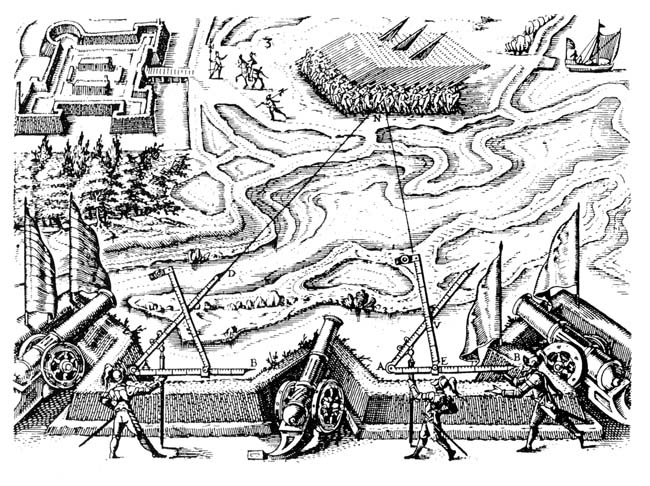[...]individual's private world of experience as the starting point for an expansion that, in a living transposition, fills out the narrowness and fortuitousness of his private experience with the infinity of what is available by re-experiencing the historical world.”
(Peter
 “let nature speak for itself” (!) a new brand of scientific objectivity that emerged in the 19th century
“let nature speak for itself” (!) a new brand of scientific objectivity that emerged in the 19th century
the present usage of objectivity can be applied to everything from
personal idiosyncrasies
this ideal of objectivity attempts to eliminate the mediating presence of the observer
the phenomena never sleep and neither should the observer
heroic self-discipline
profoundly moralized vision
and like almost all forms of moral virtuosity it preaches asceticism
human worker whose attention wandered, whose pace slackened, whose hand trembled
the self-recording instrument promised to replace the weary artist
machines offered freedom from will
being true to nature
-in its method (mechanical)
-in its moral (restrained)
-in its
early alternative approaches to creating picture that were true to nature, but not objective in the mechanical sense
atlases habituate the eye, they are perforce visual
(contrast to the scientific visual forms of photography where one is on the right place at the right time with the right
one problem of atlases is that they have to decide what nature is
they all have to solve the problem of choice
rejection of aesthetics (but what seduction exactly betrays? or what does it make accurate?)
average (is truth to nature?)
![--> techn
assemblage fabricate auto making path framework technology Flugblatt pamphlet encycloped
[source: Zock Het Eens Op p.99] assemblage fabricate auto making path framework technology Flugblatt pamphlet encycloped [source: Zock Het Eens Op p.99]](images/ajayeb/0130.jpg) asceticism of noninterventionist objectivity
asceticism of noninterventionist objectivity
“straight photography” is above all a signature of a particular scene, a specific and localized representation only awkwardly adaptable to a mosaic composition from different individuals (Zeiss-lens-camera images)
how scientists deployed mechanical means to police the artist
(for Martin Kusch - objectivity and historiography) truth-to-nature had its rationale in enlightenment sensationalist psychology, with its conception of the self as fragmented, passive, and excessively receptive.
eliminating judgment
the device would remove the process of abstraction from the artist's pen
what characterized the creation of late 19th century pictorial objectivity was self-surveillance
(note of Geppetto, Younus, Pinocchio)
personal equation
to produce reliable images
While in the early nineteenth century, the burden of representation was supposed to lie in the picture itself, now it fell to the audience. The psychology of pattern recognition in the audience had replaced the
(Grashey's) police
scientific evidence
legal evidence
at issue was, once again, the shifting border between judgment and mechanization, between the possibility (or necessity) of human intervention and the routinized, automatic functioning of the technology.
medico-legal concept of evidence
the image of the x-ray appeared (in court at least) to preempt and displace all other forms of knowledge.
(Allan Poe
trompe l'oeil (new note)
in X-ray, the encryption of information takes place in the technology itself
photographs did not carry a transparent meaning
once so policed, and presumably only then, could the photographic process be elevated to a special epistemic status, putting it in a category of its own
in contrast to drawings, photograms were tarnished by the crudeness imposed by the limited palette of the color raster. Given the choice, the author clearly favored the crude but mechanical photographic process. Accuracy had to be sacrificed on the altar of objectivity. (is Kinect pure mechanical? why i have been insisting to remove my hands?! why i was craving for objectivity?)
testimony to objectivity
rejection of subjective temptation
sophistication could corrupt an individual? (you can be accurate but not sophisticated) (not cleaning up the image of plates)
The moral narrative surrounding this mechanical construction of pictorial objectivity took many forms. As we have argued, pictures (properly constructed) served as talismanic guards against frauds and system builders, aesthetes and idealizers.
extending the mystique of the visual to the dense symbolic presentation of functions and graphs
inscription instruments
(Marey, method grafique) “the graphical method translates all these changes in the activity of forces into an arresting form that one could call the language of the phenomena themselves, as it is superior to all other modes of expression.”
graphical representation could cut across the artificial boundaries of natural language to reveal nature to all people,
they were the words of nature itself
the search for this rendition of objective representation was a moral as much as technical, quest.
morality of self-restraint
(for the scientific atlas makers of the later nineteenth century,) the machine aided where the will failed. (at once a powerful and polyvalent symbol,) the machine was fundamental to the very idea of mechanical objectivity.
(rhetoric of) wonder-working machine
the machine, (now in the form of techniques of mechanical reproduction,) held out the promise of images uncontaminated by interpretation.
...the scientists’ continuing claim to such judgment-free representation is testimony to the intensity of their longing for the perfect ‘pure’ image. in this context the machine stood for authenticity
(what is the difference between systematic image and mechanical image? same? -glitch..)
(mechanical) images that could be touted [...]